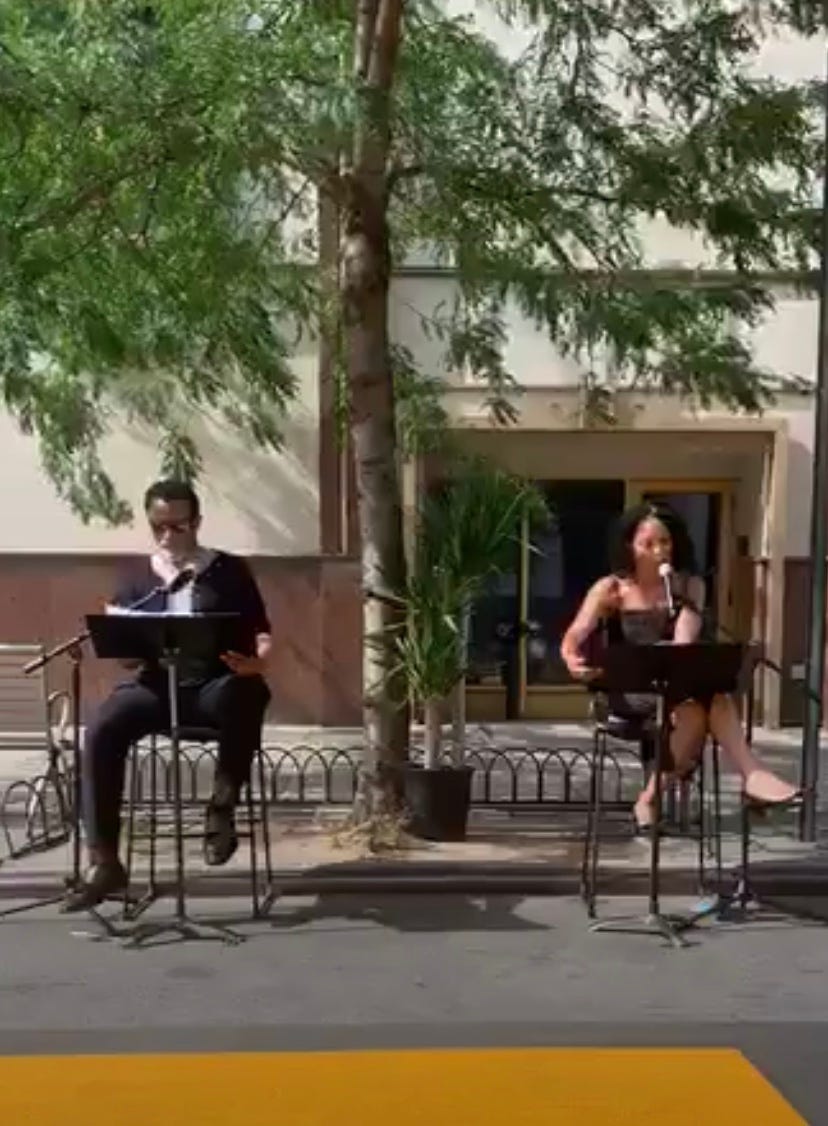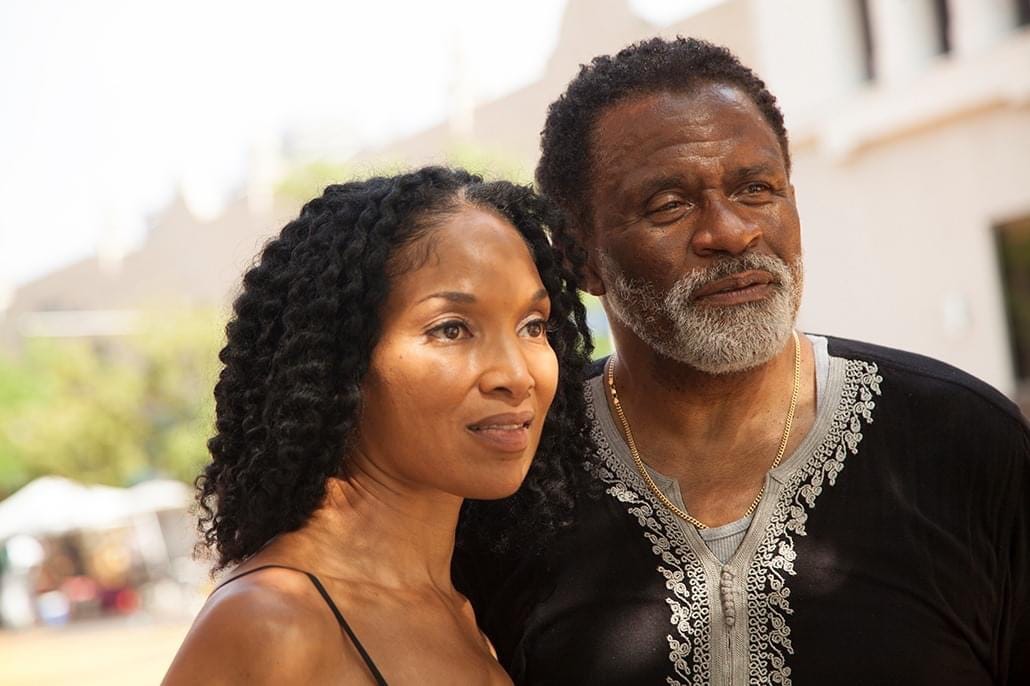I’m in The Civilians’ online platform Extended Play today with a look at The Billie Holiday Theatre’s recent work - specifically a live, socially distanced reading of Frederick Douglass’ historic speech, “What to the Slave Is The Fourth of July?” on July 5th, which was held on Brooklyn’s Black Lives Matter mural.
In researching for the piece, I had an especially moving conversation with actress Lisa Arrindell, who read alongside fellow theater vet Jerome Preston Bates. I’m including her thoughts at greater length below.
—————————-

How did you become involved in the reading, and how did you prepare?
When Dr. Indira Etwaroo asked me to do the reading, I was very thankful and excited. But I didn't get the significance of it, because I hadn't read Frederick Douglass’ speech before. When I read the speech, the significance of saying those words on that mural became clearer to me.
Dr. Indira’s real purpose, it seems to me, was that she meant for words from Frederick Douglass to in some way baptize this mural. It really wasn't about a crowd event. It was, I want these words spoken at this place at this time.
I don't know where she had that insight to have those words spoken there, but it did feel appropriate to baptize a work of art with a work of activism, with spoken words by an African American who was formerly enslaved, for - and over - the lives of those who have been lost.
And ironically, lost without the ability to have words. When we are murdered we do not have the ability to speak for ourselves. And it seems deeply appropriate that his words would come in that space for them, as well as for the living.
You were also there when the mural was painted, what was that experience like?
Etwaroo asked me if I wanted to just come and witness. When I got there, they just had the chalk outline of ‘Black Lives Matter.’ So I was able to put a paint roller into the paint, and to paint in the ‘B’ and the ‘L’ and the ‘A’ and the ‘C.’
I touched the roller to the ground and started in the ‘B,’ and I was surprised that I was overwhelmed with tears. Because I realized why I was painting. And then I heard in my heart: “We don’t want a mural.” I don't want a mural. I don’t want to say anybody's name. I don't want to be told that I have to remember names.
I would like instead to sit at a table and eat, and talk, and enjoy these people. I would like, as a mother of an African American boy and African American girl, to just know that my boy…I say boy, my son is a man…I would like to not have this constant awareness that how my son looks makes him a target.
I would like not to have to paint on the ground that Black Lives Matter.
So I was really surprised. [At first] it feels like a victory to close the street down, to get to put the names on the street - but when you're putting your hands to the plow of that field, you realize they’re dead bodies. And so there’s this strange mourning that happens at the same time. I was not aware that that would be a feeling I had.

photos courtesy of Billie Holiday Theatre
How did Frederick Douglass’ speech resonate with you, as you were reading it?
Douglass was asking for the world, the community, the culture to recognize: We are human beings. Fully and completely. If I say it in my own language, or in the language I've learned over the years, he was saying: We are you, and you are us.
He just wanted for us to be seen as human. And that’s what we ask for today, to be seen as human. To be respected and seen the way the dominant culture sees itself.
And now we come to this place where - well, no, we don’t come to this place. This hasn't changed. People are being lynched just as they were lynched previously. And they’re being lynched by the police. And they're being lynched by people who believe that they are right. And it has to stop. ‘Cause painting their names isn’t going to help.
Dr. Etwaroo shared with me that a mother who had lost her child to police violence came up to her, and she wanted his name included. And she said to me, “Lisa, I had to make room - but there isn’t room. I had to make room, because she walked up to me and told me her story. But there isn't enough room for all the names.”
When I was preparing to read I thought, I wonder what Indira is thinking? This is a long speech! But it became evident to me - oh, she wants the space, the names, the art, the memory of these human beings to be washed over in all of these words. And it takes every single word.
Indira also said to me, “I’ve always heard a man doing this speech, and I absolutely needed to hear it in a woman’s voice.” And that makes sense to me because all of those names came from mothers. Who do want their childrens’ names on that street. No-one wants to put their childrens’ name on that street.

